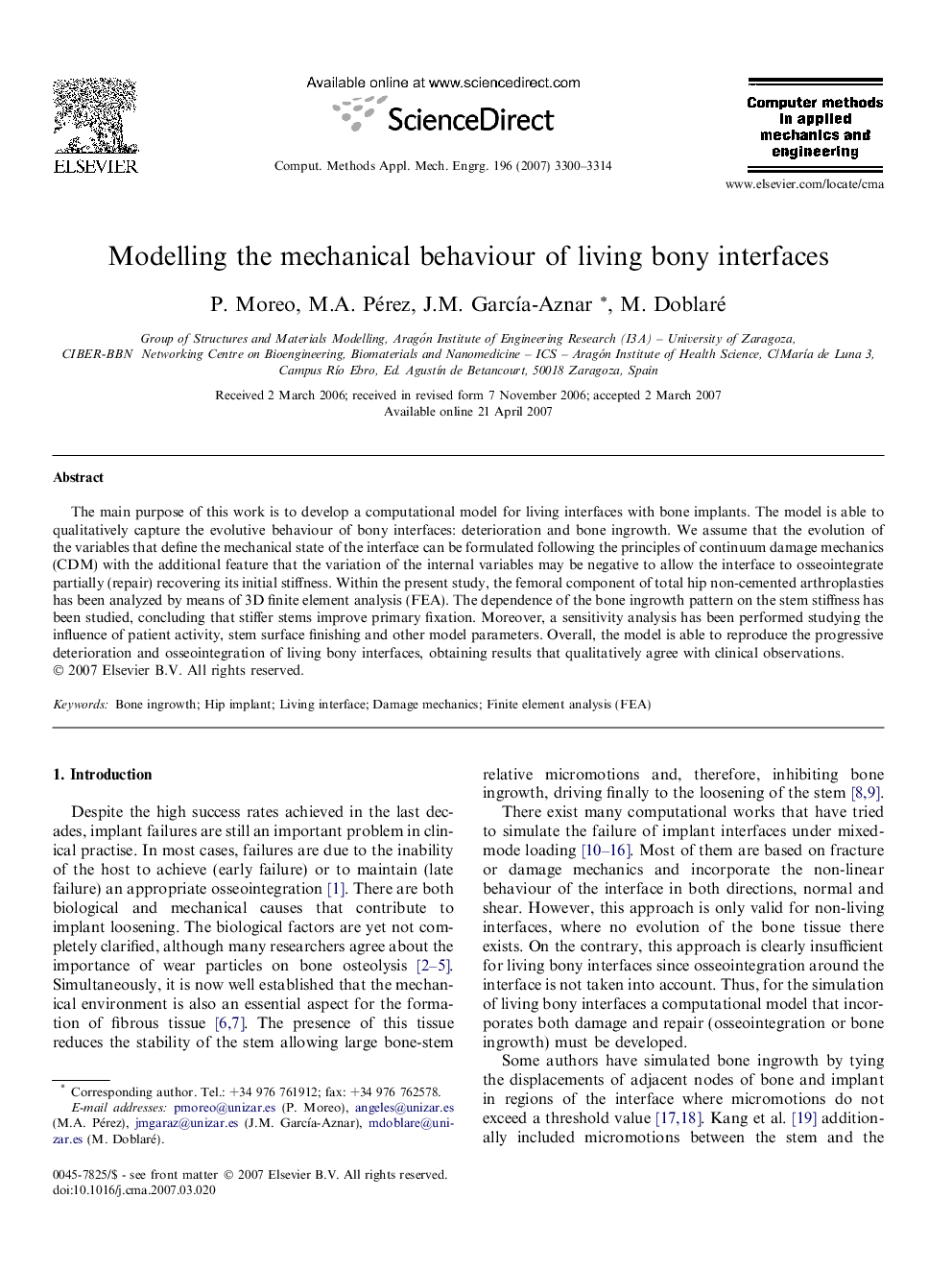| Article ID | Journal | Published Year | Pages | File Type |
|---|---|---|---|---|
| 499652 | Computer Methods in Applied Mechanics and Engineering | 2007 | 15 Pages |
The main purpose of this work is to develop a computational model for living interfaces with bone implants. The model is able to qualitatively capture the evolutive behaviour of bony interfaces: deterioration and bone ingrowth. We assume that the evolution of the variables that define the mechanical state of the interface can be formulated following the principles of continuum damage mechanics (CDM) with the additional feature that the variation of the internal variables may be negative to allow the interface to osseointegrate partially (repair) recovering its initial stiffness. Within the present study, the femoral component of total hip non-cemented arthroplasties has been analyzed by means of 3D finite element analysis (FEA). The dependence of the bone ingrowth pattern on the stem stiffness has been studied, concluding that stiffer stems improve primary fixation. Moreover, a sensitivity analysis has been performed studying the influence of patient activity, stem surface finishing and other model parameters. Overall, the model is able to reproduce the progressive deterioration and osseointegration of living bony interfaces, obtaining results that qualitatively agree with clinical observations.
